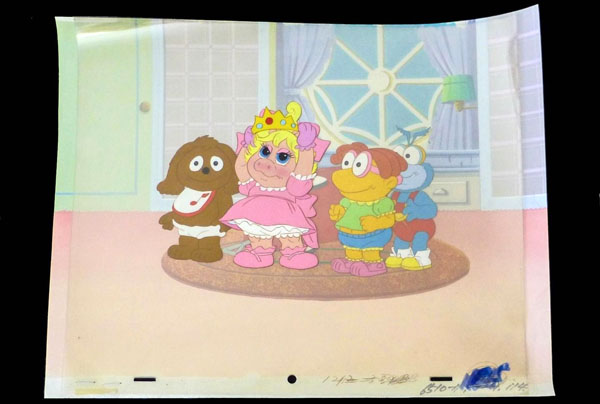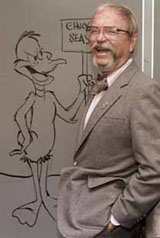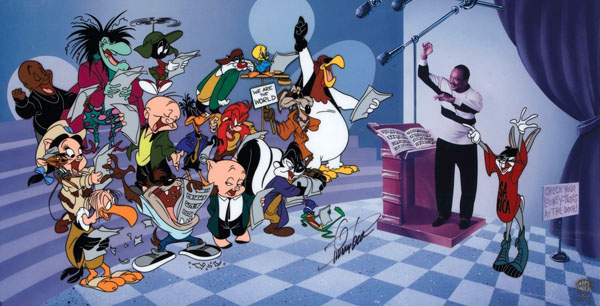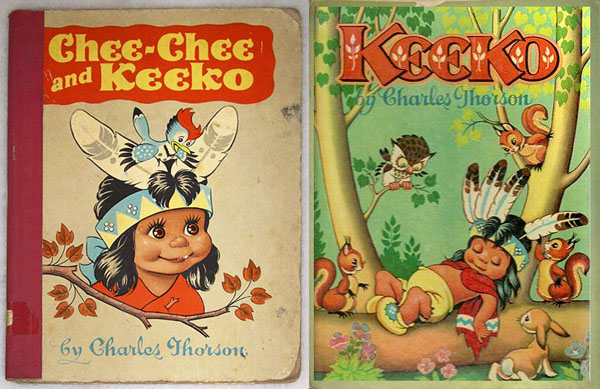
Scott and the Humanitas Prize. Jeffrey Scott wrote all thirteen half hour episodes of the first season of Jim Henson’s Muppet Babies and was credited with having developed the animated junior version of the Henson characters. He won in 1985 a $10,000 Humanitas Prize from the Human Family Educational and Cultural Institute for an episode that dealt with the characters fearing one of them was about to be sent away for its “fresh and imaginative assertion that people need people…that each individual is lovable and that we can conquer our fears only by facing them”.
His father was Norman Maurer who drew comic books and produced films for the Three Stooges. Scott said he changed his last name from Maurer in 1978 because it was too difficult for people to spell and pronounce. Scott was prolific in turning out scripts for animated shows including Challenge of the Superfriends, Pac-Man, Spider-Woman, Trollkins and Dungeons & Dragons among others. At the time he was in negotiations to write an animated feature length Muppet movie.
In accepting his Humanitas Prize, he said, “I have always felt that there is no one in a better position to bring greater ethics and moral character to the world than those who write for children. This is true, I believe, because there is a chance to give kids some understanding and guidance while they are still young and impressionable, and before they have fixed their ideas in stone – or destroyed their ideas by being stoned.
“I want to become respected and powerful enough – and I mean that for its positive attributes – to be able to put out product that will enrich society, that will raise the morals and ethics of society.”
 Chuck Jones at the Museum of Modern Art. In the New York Times September 11, 1985, producer and animator Chuck Jones commented during an exhibition at the New York City’s Museum of Modern Art for the 50th anniversary of the Warner Brothers cartoon studio: “Bugs Bunny is kind of a male Dorothy Parker mixed with Groucho Marx. The big picture of the 1930s was The Three Little Pigs which was completely a Depression invention but Bugs was a creature of the 1940s. When we got back from the war, we all had a different attitude. We were independent.
Chuck Jones at the Museum of Modern Art. In the New York Times September 11, 1985, producer and animator Chuck Jones commented during an exhibition at the New York City’s Museum of Modern Art for the 50th anniversary of the Warner Brothers cartoon studio: “Bugs Bunny is kind of a male Dorothy Parker mixed with Groucho Marx. The big picture of the 1930s was The Three Little Pigs which was completely a Depression invention but Bugs was a creature of the 1940s. When we got back from the war, we all had a different attitude. We were independent.
“We could make public mistakes. And that’s when we did our best work. We learned to work in 540 feet or six minutes. Limited animation and computer animation just won’t do it. Daffy Duck shows that. He is a creature of infinite error. You have to draw him frame by frame, because with each frame he makes a different mistake. You couldn’t computerize Woody Allen or Buster Keaton.
“This exhibition makes me very happy and very sad. It makes me happy because I love it. I love the subversive, anarchic world that only existed in Warner Brothers cartoons. It make me sad because it might very well be the end of a great era, the end of complete animation, done frame by frame with great care, approaching art.”
Hollywood Duck. In 1985, it was announced that producers Gary Kurtz and Steven Paul Leiva would make a feature film for Republic Pictures Corp. to be called Hollywood Duck. Paul Bartel was to direct and star (as he did on Eating Raoul). Republic president Aubrey Groskopf said Hollywood Duck would be a live action feature with an animated duck as a co-star. Groskopf said, “The film will be aimed toward general audiences but will also offer slapstick and surreal comedy that an adult audience will enjoy.”
The Dude. In 1985, animator Dan Haskett was working on two animated projects for music producer Quincy Jones. One was a music video and the other was a six minute animated short called Bugs Bunny Meets the Dude. The Dude was an original character created by Jones for a 1981 song. Jones later appeared on a limited edition cel with him conducting Warner Brothers animated characters entitled “We are the Tunes” drawn by Haskett and including the Dude character in the back row.

Charles Thorson’s Children’s Books. Many animators also wrote and drew children’s books. Charles Thorson wrote and illustrated two children’s books about a little Native American boy character that resembles Disney’s Little Hiawatha (1937) entitled Keeko (1947) and Chee-Chee and Keeko (1952). Publisher was Wilcox & Follett Co. in Chicago. Thorson worked at Disney and Warners from 1935-1945 and passed away in 1966. Thorson did work on the Disney short of Little Hiawatha. Chee-Chee was Keeko’s little bird friend.

Carroll on Ursula. From Premiere magazine December 1989, actress Pat Carroll who did the voice for Ursula in The Little Mermaid said, “I don’t find one alleviating point of goodness in the character and I love it! There aren’t many bravura roles written for theater or film. Everything is so realistic. There’s something unctuous and oily about the lower register of a voice. A woman’s voice gets ominous when it’s dropped like that.”
Words of Wisdom from Eric Larson. In a 1981 interview with the Los Angeles Times, animator Eric Larson said, “You have to know what a thing really is before you can caricature it. Animation is about creating characters with emotions. Believable characters with believable emotions. This (Disney) Studio is an emotional thing for me. I’ve never even asked for a raise.”
Henry Selick Speaks. In Entertainment Weekly April 26th, 1996, director Henry Selick talked about the technical challenges of directing James and the Giant Peach (1996). “Around every corner was another nasty surprise. I was very worried,” said Selick. “Characters stuck together in a limited space, like Hitchcock’s Lifeboat (1944). How to keep it going?
“And we really didn’t know how to do the ocean scene where 600 seagulls save the peach. We did it by blending paintings, conventional cel and stop motion and computer graphics. We got out of control in the computer budget area at times. Other things were more traditional. How to keep a metallic spider web from sagging overnight? We braced it with rods wrapped in black velvet.
“I soon realized I was a fish out of water at Disney. I know what the rules are and when I’m breaking them. It’s proven there are other ways to connect to an audience. Disney’s way is a great way. But there are other ways to go.”


 Jim Korkis is an internationally respected animation historian who in recent years has devoted his attention to the many worlds of Disney. He was a columnist for a variety of animation magazines. With his former writing partner, John Cawley, he authored several animation related books including The Encyclopedia of Cartoon Superstars, How to Create Animation, Cartoon Confidential and Get Animated’s Animation Art Buyer’s Guide. He taught animation classes at the Disney Institute in Florida as well as instructing classes on acting and animation history for Disney Feature Animation: Florida.
Jim Korkis is an internationally respected animation historian who in recent years has devoted his attention to the many worlds of Disney. He was a columnist for a variety of animation magazines. With his former writing partner, John Cawley, he authored several animation related books including The Encyclopedia of Cartoon Superstars, How to Create Animation, Cartoon Confidential and Get Animated’s Animation Art Buyer’s Guide. He taught animation classes at the Disney Institute in Florida as well as instructing classes on acting and animation history for Disney Feature Animation: Florida.




















































There’s a closer Stooge connection: Jeffrey Scott’s mother is Joan Howard Maurer — daughter of Moe Howard.
Jeffrey Scott would then be Moe Howard’s grandson, since Norman Maurer was married to Moe’s daughter Joan.
I always wondering about that caricature of Quincy in that limited art piece. I didn’t know that Dan drew that. By the way, does Warners still license new limited art pieces? I noticed there aren’t any on the WB store and I don’t think even Disney does that type of art pieces much anymore.
Jeffrey Scott inserted his Scientology beliefs into the cartoons he wrote, including Muppet Babies.
https://web.archive.org/web/20091021041232/http://geocities.com/TimesSquare/Realm/4173/scott.html
I was a story director and head designer on JIM HENSON’S MUPPET BABIES. I worked on the series on staff and freelance for six seasons. Jeff Scott’s scripts were heavily re-written by those of us who were doing storyboards for this great series. Mr. Scott must never have watched them, or he wouldn’t be nearly as boastful. His stuff was Saturday morning crap; we made the stories memorable and sincere.
I wouldn’t doubt you and your staff had a lot to do with making that show worked as it did Scott!